Various skin lesions are quite common and cause all sorts of problems. One of the common disorders is internal acne on the cheeks. They may be associated with various factors. To cope with the problem, you need to establish the exact cause of the violation.
a brief description of
Most often, internal acne on the cheeks appears during puberty. During this time, a person experiences serious hormonal changes. There is no need to worry in such a situation. If you take proper care of your face, the problem will disappear on its own.
However, sometimes rashes appear at an older age. In such a situation, it is worth identifying the internal causes. Acne can be a consequence of eating disorders. The problem also indicates pathologies of the digestive system and lesions of the thyroid gland.
Causes
To eliminate subcutaneous acne, you need to identify the triggering factors for their appearance.
Key reasons include the following:
- disruption of sebum production;
- clogging of the ducts of the sebaceous glands;
- inflammatory processes in clogged glands associated with metabolic disorders;
- activation of skin bacteria;
- damage to the digestive system;
- acceleration of hair follicle growth;
- endocrine diseases - most often they are indicated by acne on the chin.
Inner cheek in mouth
Pimples in the mouth can appear for a variety of reasons. This phenomenon may indicate dangerous pathologies, allergic reactions or weakened immunity.
There are such types of pathology:
- Herpetic stomatitis. It is caused by the herpes virus. Children are more susceptible to it. The pathology is accompanied by an increase in the size of the lymph nodes and a slight increase in temperature.
- Bacterial stomatitis. It is caused by staphylococci and streptococci. Usually the pathology is associated with a weakening of the body. It is imperative to carry out treatment to stop the growth of bacteria.
- Fungal stomatitis. It is caused by candida fungus. The disease develops against the background of a weakened immune system. If treatment is not started in time, there is a risk of damage to the entire digestive system.
- Herpetic sore throat. This disease is caused by the Coxsackie virus. Most often it occurs in children. The disease is accompanied by fever and redness of the throat.
In addition, the appearance of acne on the inside of the cheek may indicate the development of the following anomalies:
- chickenpox;
- secondary syphilis;
- lupus;
- measles;
- glossitis.
Sometimes the appearance of acne is caused by drinking excessive amounts of alcohol and smoking. In such a situation, it is enough to give up bad habits.
On the cheeks and chin
Various rashes often occur in this area. The cause of the disease can be poor nutrition. Eating sweet baked goods on an empty stomach may well cause inflammation.
Nuts, cheese, and carbonated drinks are also provoking factors. To cope with the problem, you definitely need to give up bad habits and adjust your diet.
Types and their features
The category of internal acne includes blackheads, skin bumps and inflamed nodules. If you press on such formations, there is no discomfort. If pain does appear, you can suspect the presence of a carbuncle or boil.
A boil is usually understood as an inflammation that affects the hair follicle. Carbuncle is an acute inflammation that affects several hair follicles at once.
It often affects fairly deep layers of the epidermis and muscle. Each type of acne has purulent contents. After about 4-5 days it comes out.
Other types of internal acne do not mature as quickly. Sometimes from the moment of formation until the release of purulent masses, it takes from 1 to 2 weeks. If you try to squeeze out pimples on your own, the duration of ripening will increase.
Ointment for acne on the nose. More details here.
How to treat internal acne on cheeks
How to remove such formations? This question worries a lot of people. To cope with the problem, it is very important to provide comprehensive therapy.
Ichthyol ointment is considered one of the most effective and inexpensive means for combating subcutaneous acne.
It helps to draw out subcutaneous formations and purulent masses, cope with irritation, provide a disinfecting effect, relieve inflammation and help narrow pores.
To cope with internal acne, experts recommend following these rules:
- Apply the ointment directly to the affected areas. To do this you need to use cotton swabs. It is not recommended to treat the entire surface of the cheek.
- After 2 hours, the ointment can be washed off.
- After using the product for a day, you should stop using masks. Otherwise, there is a risk of severe burning of the skin.
- When applying the composition to the entire surface of the cheek, there is a risk of burns. The marks can last quite a long time.
- Great caution should be exercised by those with oily skin, since the product contains petroleum jelly.
Another effective remedy is Vishnevsky ointment. It has a wide spectrum of action and is popular among people who suffer from skin pathologies. The composition contains castor oil, birch tar and xeroform.
The product penetrates into the deep layers of the skin and helps quickly cope with inflammation. It also has a disinfecting effect, dries out the dermis and draws out purulent masses. The composition has noticeable regenerating properties.
There are several methods of using this drug. To cope with large internal pimples on the cheeks, you need to use an application.
To do this, you need to fold a piece of gauze several times and apply a thick layer of ointment on it. Apply the resulting compress to the pimple and secure with a band-aid.
For isolated rashes with minor inflammation, you can use a targeted application of the product using a cotton swab. If there are a lot of pimples, the ointment can be used to prepare a mask.
To do this, the composition should be applied to a piece of gauze and applied to the cheeks. The product must be kept for a long time. But if the slightest discomfort occurs, the application should be removed. This procedure can only be performed after consulting a dermatologist.
The product has a fairly intense aroma and is difficult to wash off with cosmetics.
To remove any remaining mask, wipe your skin with a cotton pad and then wash with water. After the procedure, it is not recommended to use cosmetics that have a drying effect.
Video: How to get rid of subcutaneous acne?
An effective remedy
To cope with internal acne, you can use the following formulations:
- Saline solution. To make it, salt is mixed with water. The resulting solution should be brought to a boil, a cotton pad soaked in the liquid and applied to the affected area.
This composition penetrates into the deep layers of the skin and ensures its cleansing. Such procedures are carried out over several days.
- Calendula decoction. Take 1 large spoon of dry calendula, add 500 ml of boiling water. Leave for half an hour, then strain and cool the product. Use to wipe the skin three times a day.
- Aloe. The leaves of the plant need to be washed and stored in the refrigerator for 10 days. Then the raw materials should be crushed and boiled water added. Leave for 1 hour, boil and filter. Wipe the inflamed areas every day.
Is it possible to squeeze out
Doctors categorically do not recommend trying to open internal pimples on your own, since there is a risk of subsequent spread of infection and relapse of the pathology.
Diet
To cope with acne, you need to make adjustments to your diet. It is important to avoid smoked meats and pickles.
Fatty foods, sweets, and carbonated drinks are also prohibited. Doctors recommend that you stop smoking and drinking alcohol.
Preference should be given to plant products. Foods that contain large amounts of fiber are also very beneficial. Equally important is the consumption of large amounts of clean water.
Proper care
To cope with internal acne on the cheeks, you need to follow a number of recommendations:
- To walk outside.
- Avoid uncontrolled use of vitamins and medications.
- Avoid stressful situations.
- Be careful when choosing cosmetics. Some of them have allergenic properties and can cause rashes.
- Wash with tar soap. It cleanses pores of impurities and has a drying effect.
The formation of pathological elements on the oral mucosa is most often caused by the introduction of pathogenic bacteria, viruses, and fungi into it, which results in the appearance of acne in the mouth.
Even small elements can manifest themselves as severe pain during eating, articulation, or hygienic brushing of teeth.
Rashes may indicate dental problems, general infectious diseases, or be a sign of trouble in other organs.
Why do pimples appear in the mouth?
When the integrity of the mucous membrane is violated, against the background of low immune defense, pathogenic bacteria penetrate the site of damage and begin to multiply intensively.
Externally, this can be manifested by rash elements of various colors: whitish, yellowish, crimson, brown-black.
Sometimes pimples in the mouth are a symptom of an infectious disease.
White
The reasons for the appearance of white elements can be:
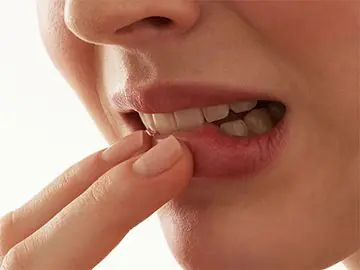
Elements of the rash of a reddish hue come in different saturations: from pinkish to purple.
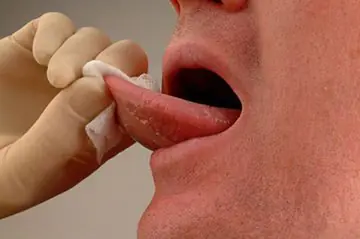
- For thermal or chemical burns of the oral mucosa the papillae swell, turn red and resemble pimples. They recover after two to three days.
- Allergic reaction on the material of a filling, prosthesis, implant, hygienic paste or rinse aid, food or medicine - manifests itself as a scattering of small red pimples that cause itching and burning.
- Measles - predominantly a childhood infectious disease. The first symptom is a measles rash on the oral mucosa: red spots appear with a pinpoint whitish bump in the middle. After about a week, against the background of catarrhal symptoms, the rash gradually spreads to the skin.
- Syphilis secondary - a common infectious disease transmitted primarily through sexual contact. Rashes on the oral mucosa are pale reddish-pink spots with a hint of rust. They may disappear spontaneously and then reappear.
- Vesical vascular syndrome — occurs against the background of pathologies of the cardiovascular system with high blood pressure due to a violation of the integrity of the capillaries. A single, dense red blister appears on the soft palate, cheek, or tongue. It opens after a couple of days with the formation of an ulcer, which heals after another three to five days.
Black
In most cases, upon careful examination, the black elements on the oral mucosa appear as purplish-bluish hematomas.
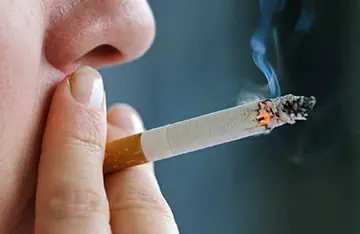
- Mechanical injury — biting with sharp edges on a tooth destroyed by caries, an unsuccessful filling, an uncomfortable prosthesis, etc. Bites resolve spontaneously within a few days.
- Angioma - vascular tumor, pulsates with slight pressure, dark blue or black-purple in color. It is dangerous due to the development of malignant bleeding if the integrity is violated.
- Melanosis (hyperpigmentation) of a smoker - coffee-colored dotted formations. Their appearance is preceded by halitosis and a brownish-yellow discoloration of tooth enamel.
- Addison's disease - adrenal gland dysfunction - a hormonal pathology, does not occur often; one of the manifestations may be the formation of black elements with a bluish tint on the oral mucosa.
Purulent
Pimples with purulent contents can be a manifestation of:
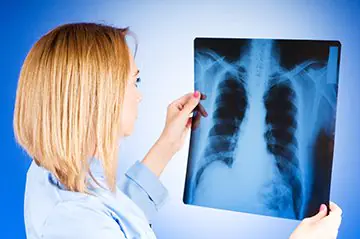
- Bacterial stomatitis. The cause of its occurrence is often streptococcal and staphylococcal flora. Pustules can be single or merge with each other, they itch and hurt.
- Tuberculosis - accumulation of tiny ulcers on the oral mucosa around a dense ulcer. Very painful and contagious.
Watery
Most blistering rashes are caused by viruses, and their appearance is usually accompanied by a fever.
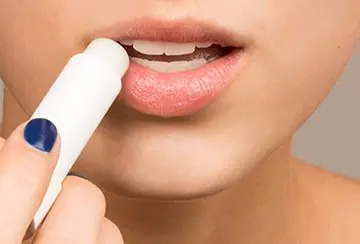
- Herpetic stomatitis - provoked by the herpes simplex virus, the elements of the rash undergo several stages of development:
- red small papules quickly become vesicles with transparent contents;
- the filling of the bubbles becomes cloudy;
- they open and turn into painful ulcers with a whitish coating around the rim;
- mucosal defects gradually heal without a trace.
- Chicken pox predominantly a childhood disease, its causative agent is the Zoster virus. Elements of the rash go through the same stages of development as with herpes, spreading not only to the skin, but also to the oral mucosa.
- Mouth-hand-foot syndrome Children are susceptible; its cause is Coxsackie enterovirus. It manifests itself as the appearance of bubbles with transparent contents on the mucous membrane of the mouth, the skin of the palms and soles.
- Dühring's dermatitis - manifestation of intestinal pathologies. It is characterized by painful, tense blisters on the oral mucosa and skin.
- Epidermolysis bullosa - reveals itself in infancy and accompanies throughout life. Bubbles can be localized over the entire surface of the oral cavity.
- Pemphigus - an autoimmune pathology, manifested by flaccid transparent blisters on the oral mucosa. High risk of infection.
Localization of rashes in the oral cavity
In general diseases, the rash spreads more or less evenly over the entire surface of the mucous membrane of the cheeks, palate, lips, and tongue.
However, some isolated elements that appear in one place or another may indicate pathology of various organs of the oral cavity.
On the inside of the cheek
A sebaceous gland cyst can form in the mucous membrane of the cheek - it manifests itself as a large tubercle, there is no inflammation, it grows slowly, and is painless.
Often the inner surface of the cheeks is subject to trauma (bites).
In the sky
A single non-inflammatory pimple on the palate can be a manifestation of a palatal cyst - a benign formation in the form of a painless ball or nodule.
Hemangioma is a vascular tumor that can form in the tissues of the soft palate.
On the gum
Single elements can form on the gums on the inside or outside of the dentition.
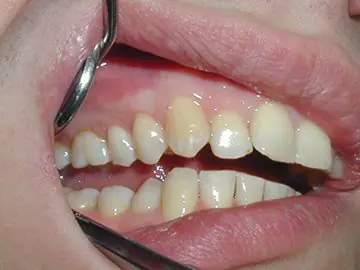
- Lipoma (wen) - a soft, round, white, painless lump. The tumor grows slowly, the danger is its mechanical damage, which can lead to deep damage to the gum tissue.
- Gum cyst - is an encysted, stabilized purulent process in the tissues. It is often a consequence of poorly performed dental procedures. It is dangerous due to the threat of destruction of the bone tissue of the tooth and its root.
- Gingival fistula, located on the outside of the dentition, looks like an inflamed, painful pimple. Formed by a purulent cyst located in the deep layers of the gums, it is a complication of periodontitis and caries.
On and under the tongue
The occurrence of acne on the tongue or in the sublingual area, in addition to those caused by general or dental diseases, can be due to several other reasons.
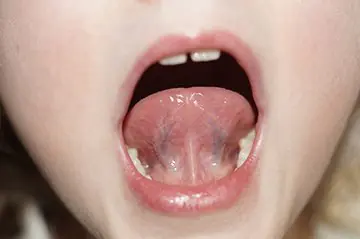
- Trauma - even to a small impact, a response occurs in the form of a painful lump on the surface of the tongue, which soon turns into an inflamed pimple.
- Glossitis - inflammation of the tongue, which can manifest itself as red or purulent, raw and painful elements.
- Sublingual salivary gland cyst - a round, non-inflamed bulge that can be visible with a bluish tint.
On and under the lip
A pimple on the inner surface of the lip not associated with herpes, general or dental disease most likely indicates a cyst of the minor salivary gland. It has the appearance of a bluish hemisphere, reaches sizes from 5 mm to 2 cm, the boundaries of the cyst are clear.
What to do at home?
Given the presence of many bacteria inhabiting the mucous membrane, the first priority when detecting elements is their disinfection with antiseptic agents and strengthening hygiene measures for the oral cavity.

An important condition for the rapid healing of acne is following a diet that excludes foods that irritate the damaged mucous membrane:
Drug treatment
Getting rid of acne begins with eliminating the cause and treating the general disease, while simultaneously incorporating local procedures.
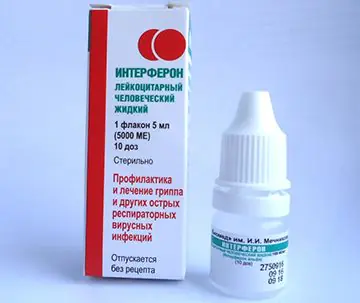
- Antiviral agents such as Interferon, Acyclovir, Bonafton are applied to herpetic rashes.
- Fungal plaques are treated with medications that are active against Cand > To combat acne in the mouth, vitamin preparations Aevit, Aekol are used, which improve nutrition and healing of the mucous membrane.
Immunomodulators are prescribed by the attending physician taking into account the general condition of the body.
Treatment with folk remedies
For fungal infections of the oral mucosa, traditional medicine recommends a solution of baking soda:
- half a teaspoon of soda per glass of boiled water at room temperature - for rinsing;
- one teaspoon per half glass of water - for spot application on candidiasis plaques.
Bacterial stomatitis is treated with an infusion of medicinal herbs that have an antimicrobial effect.
A tablespoon of raw material is brewed with a glass of boiling water and left warm for about forty minutes. Strain, cool, and use as a rinse several times a day.

The following herbs are used for infusions (one at a time or in a mixture):
A decoction of oak bark has a drying, astringent, aseptic effect: 1 tbsp. spoon in a glass of water, keep on the stove at low heat for a quarter of an hour. Cool, filter, rinse your mouth three times a day.
Many people use pharmaceutical alcohol tinctures of calendula, fresh aloe juice, Kalanchoe for spot application, dissolve a piece of natural honey or a ball of propolis.
How to treat pimples in a child's mouth?
- Much attention is paid to pain relief: Kamistad and Dentinox-gel are used.
- The fungus is eliminated by soda irrigation using Tantum Verde.
- Aerosol antiseptics are chosen: Hexoral, Chlorophyllipt, Lugol.
Pimples in a child’s mouth should be treated under the supervision of a doctor.
Pimples most often appear on the inner surface of the cheeks, tongue, upper palate, and on the back of the lips. This may be a consequence of infection, mechanical trauma to the mucous membrane - burns or biting, an allergic reaction, the result of irritation by various substances, drinking alcohol or smoking tobacco.
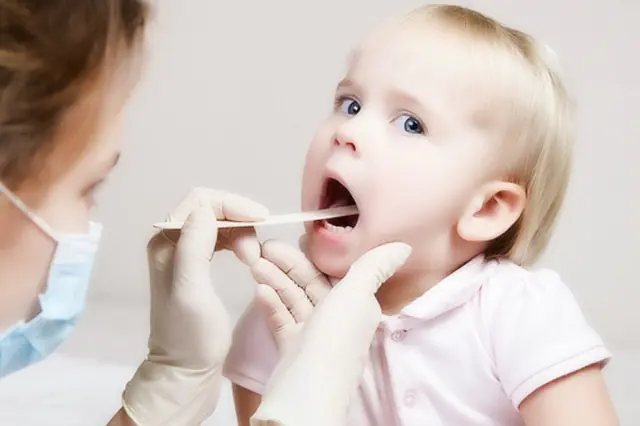
Photo 1: In children, acne in the mouth is usually of infectious origin, especially if the child’s immunity is weakened. Source: flickr (Annie Lenine).
The main causes of acne
The causes of acne may vary depending on the type.
Pimples on the inside of the lip
More often are small and white, but sometimes cluster, affecting a large area of the mucous membrane. Sometimes it’s not acne that appears, but even ulcers, quite painful to the touch. The cause may be either poor hygiene or an incipient disease.
Pimples on the inside of the cheek
They may be signs of several diseases at once, both dental and those related to dysfunction of internal organs, so it would be a good idea to check both the teeth and the digestive organs.
These pimples also may be white, red, ulcer-like, or thickened, plaque-like. Sometimes this is a consequence of infection in a wound formed, for example, from a scratch with a fish bone while eating.
Red pimples in the mouth
Red dots, spots in the mouth, tongue or throat, are almost always a symptom of an infectious disease. They are accompanied by severe pain and require an immediate visit to the doctor.
Diseases associated with acne in the mouth
Stomatitis and its varieties
The most common disease that causes pimples in the mouth - this is stomatitis. It can be viral, bacterial or fungal.
Transparent pimples containing fluid inside, may be a symptom of herpes stomatitis. This disease is not dangerous, but unpleasant, since the lesion tends to grow and causes discomfort, in addition, rashes may be accompanied by fever and weakness. More common in teenagers or young children.
Bacterial stomatitis is caused by microorganisms such as staphylococcus and streptococcus. It can be a side effect after a cold or sore throat, sometimes accompanied by weakness or fever, but more often such pimples go away on their own if further development of the infection is prevented.
Fungal stomatitis is caused by a fungus of the genus candida, its other name is candidiasis, or thrush. It occurs due to decreased immunity and looks like whitish or yellowish bumps on the inside of the cheeks and tongue.
In adults, stomatitis can sometimes be caused by leukoplakia - painful thickening of the skin inside the cheek, gums or tongue, forming dense plaques. This phenomenon is often observed in smokers.
Note! Leukoplakia is dangerous because in some cases it degenerates into a malignant tumor.
Allergic stomatitis occurs as a reaction to irritation by food or chemicals entering the oral cavity, while numerous rashes, itching and swelling of the mucous membrane are observed.
Viral diseases
Herpangina - caused by an enterovirus, looks visually like a large pimple filled with fluid that bursts, leaving behind a white coating that is difficult to remove. More often, this disease affects children and is accompanied by fever, constipation, and rashes on the arms and legs.
Rash on the inside of the cheek in children may be a sign of a viral infection - rubella, measles, scarlet fever, whooping cough or chickenpox. In this case, it is not the symptom that needs to be treated, but the disease itself, which is quite serious.
Other diseases
Another serious illness, the symptoms of which are pimples and ulcers on the oral mucosa - lupus. This is an autoimmune disease in which the immune system fails and the body begins to destroy itself. Lupus ulcers are very painful and difficult to heal.
Note! Secondary syphilis has similar symptoms, but they are temporary: they disappear and then appear again. An accurate diagnosis can only be made using a blood test.
Pimples on the gums may be a sign of a fistula - a serious dental disease in which the root of the tooth is destroyed and a focus of inflammation filled with pus is formed. Fistula causes pain and may rupture, leading to inflammation of the gums and even the jawbone.
First aid for acne in the mouth
To reduce pain Sea buckthorn oil or products containing lidocaine can be used externally.
Such solutions have an antibacterial effect, like Chlorhexidine and Miramistin, and antiviral ointments - Acyclovir, Arbidol, Ingavirin and the like.
For candidiasis metronidazole or nystatin ointment is prescribed.
Also sometimes additionally prescribed antihistamines and immunomodulators.



